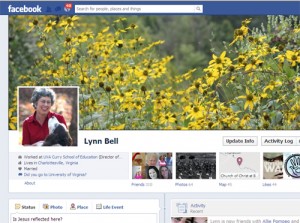 Whenever I read the Gospels, and especially when I read about the ways Jesus interacted with women, I am challenged to reconsider my own daily interactions with women. They are too often inconsistent with the example Jesus set.
Whenever I read the Gospels, and especially when I read about the ways Jesus interacted with women, I am challenged to reconsider my own daily interactions with women. They are too often inconsistent with the example Jesus set.
Today, I reflected on being like Jesus in my presence on Facebook. I thought about the image I might be projecting through my Facebook posts and the impressions I have formed of others through their posts.
I wondered if the people who see my posts can tell what my life priorities are. Or if anyone is attracted to Jesus through my social networking presence?
I am not suggesting that we set up a false image of ourselves or pretend to be better than we are. I am talking about taking a hard look at our timelines, though, and the messages we are communicating about ourselves and about the God we represent. I know I want to be more intentional about what I post.
Here’s a little inventory of questions I made up for myself. It’s not a rulebook, of course, just some thoughts to consider.
– Can people tell that I love my family dearly but that I also make time to care for other people too?
– Have I given the impression that injustice and the suffering of innocent people occupies more of my attention than books, movies, food, purchases, home decorating, hobbies, sports, etc.
– Do people know more about my passion for helping needy people than about my political views?
– As a representative of God, my church, and an area of ministry, do my posts unquestionably communicate that people with political views different from mine are loved and welcomed in our fellowship?
– Have I posted so many proclamations of what I believe is right and wrong that a person caught up in sin would never consider coming to me for help?
– Does the way I express my opinions communicate to others that I am someone who would listen nonjudgmentally when their life feels like it is falling apart?
– Have I been discrete enough on Facebook that people feel they could trust me with their confidences?
– Do I present myself as the kind of person who would speak the truth in love when someone wanted to hear it?
I am going to keep thinking about this list and may add more in future. What are your ideas?
Let your speech always be gracious, seasoned with salt, so that you may know how you ought to answer each person.
(Colossians 4:6)
Let no corrupting talk come out of your mouths, but only such as is good for building up, as fits the occasion, that it may give grace to those who hear.
(Ephesians 4:29)




